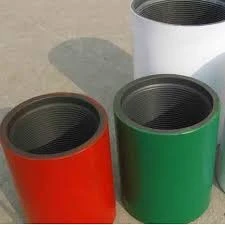- Afrikaans
- Albanian
- Amharic
- Arabic
- Armenian
- Azerbaijani
- Basque
- Belarusian
- Bengali
- Bosnian
- Bulgarian
- Catalan
- Cebuano
- Corsican
- Croatian
- Czech
- Danish
- Dutch
- English
- Esperanto
- Estonian
- Finnish
- French
- Frisian
- Galician
- Georgian
- German
- Greek
- Gujarati
- Haitian Creole
- hausa
- hawaiian
- Hebrew
- Hindi
- Miao
- Hungarian
- Icelandic
- igbo
- Indonesian
- irish
- Italian
- Japanese
- Javanese
- Kannada
- kazakh
- Khmer
- Rwandese
- Korean
- Kurdish
- Kyrgyz
- Lao
- Latin
- Latvian
- Lithuanian
- Luxembourgish
- Macedonian
- Malgashi
- Malay
- Malayalam
- Maltese
- Maori
- Marathi
- Mongolian
- Myanmar
- Nepali
- Norwegian
- Norwegian
- Occitan
- Pashto
- Persian
- Polish
- Portuguese
- Punjabi
- Romanian
- Russian
- Samoan
- Scottish Gaelic
- Serbian
- Sesotho
- Shona
- Sindhi
- Sinhala
- Slovak
- Slovenian
- Somali
- Spanish
- Sundanese
- Swahili
- Swedish
- Tagalog
- Tajik
- Tamil
- Tatar
- Telugu
- Thai
- Turkish
- Turkmen
- Ukrainian
- Urdu
- Uighur
- Uzbek
- Vietnamese
- Welsh
- Bantu
- Yiddish
- Yoruba
- Zulu
Understanding Well Casing Couplings and Their Importance in Drilling Operations
Understanding Well Casing Couplings A Key Component in Drilling Operations
In the world of oil and gas exploration, the integrity and efficiency of wellbore construction are paramount. At the heart of this construction process are well casing couplings, which play a crucial role in ensuring that drilling operations are safe, effective, and capable of withstanding the challenging conditions of subsurface environments.
What is Well Casing?
Before diving into the specifics of casing couplings, it’s essential to understand what well casing is. Well casing refers to the series of pipes, usually made of steel, that are inserted into a drilled well to stabilize its walls and prevent the collapse of the wellbore. Casing also serves to isolate different underground water zones, protecting both freshwater aquifers and the drilling process itself.
Casing is installed in segments, and these segments must be securely joined together to ensure structural integrity. This is where well casing couplings come into play.
The Role of Casing Couplings
Casing couplings are short lengths of pipe used to connect two sections of casing together. They are essential for maintaining a continuous and robust casing string, which is vital for maintaining the well’s integrity under the pressures and temperatures typically found deep underground.
There are different types of couplings depending on the requirements of the specific drilling project. Common types include
1. Threaded Couplings These are the most conventional types of couplings, featuring external threads on one end and internal threads on the other. They allow two casing lengths to be screwed together, providing a secure connection. Threaded couplings are widely used due to their versatility and ease of installation.
well casing coupling

2. Welded Couplings In scenarios where a stronger bond is needed, welded couplings may be employed. These involve fusing two casing ends together using welding techniques. While this method can provide superior strength, it also requires skilled labor and additional time due to the welding process.
3. Slip-on Couplings These couplings simply slide over the ends of two casing lengths. They are typically used for less critical applications where high tensile strength is not as crucial.
Importance of Quality in Couplings
The quality of casing couplings significantly influences the overall safety and efficiency of drilling operations. High-quality couplings are designed to withstand extreme pressures and corrosive environments often found deep underground. They must comply with industry standards, including the American Petroleum Institute (API) specifications, which establish guidelines for materials, dimensions, and mechanical properties.
Issues such as corrosion, fatigue, and improper installation can lead to costly operational failures, including well blowouts or leaks. As such, investing in quality casing couplings and ensuring proper installation practices is essential for the longevity and safety of the well.
Innovations in Well Casing Technology
With advancements in technology, well casing couplings have also seen improvements. Coatings and materials that enhance corrosion resistance, as well as designs that facilitate easier handling and installation, are becoming more commonplace. Additionally, the development of smart couplings equipped with sensors is on the horizon, offering real-time monitoring of the casing’s condition and enabling proactive maintenance strategies.
Conclusion
Well casing couplings are a small yet critical component of the entire drilling operation. Their role in connecting casing segments cannot be understated, as they significantly impact the safety and efficiency of oil and gas extraction processes. As the industry continues to evolve, so too will the technology and practices surrounding these essential components. Ensuring the highest standards in casing coupling quality will remain a foundational aspect of successful drilling operations, highlighting the interplay between engineering, technology, and safe resource extraction.
-
Tubing Pup Joints: Essential Components for Oil and Gas OperationsNewsJul.10,2025
-
Pup Joints: Essential Components for Reliable Drilling OperationsNewsJul.10,2025
-
Pipe Couplings: Connecting Your World EfficientlyNewsJul.10,2025
-
Mastering Oilfield Operations with Quality Tubing and CasingNewsJul.10,2025
-
High-Quality Casing Couplings for Every NeedNewsJul.10,2025
-
Boost Your Drilling Efficiency with Premium Crossover Tools & Seating NipplesNewsJul.10,2025







